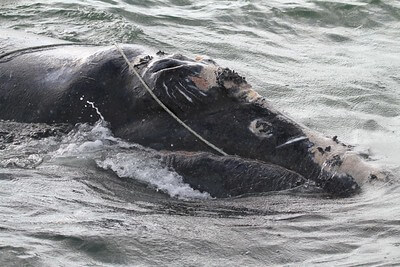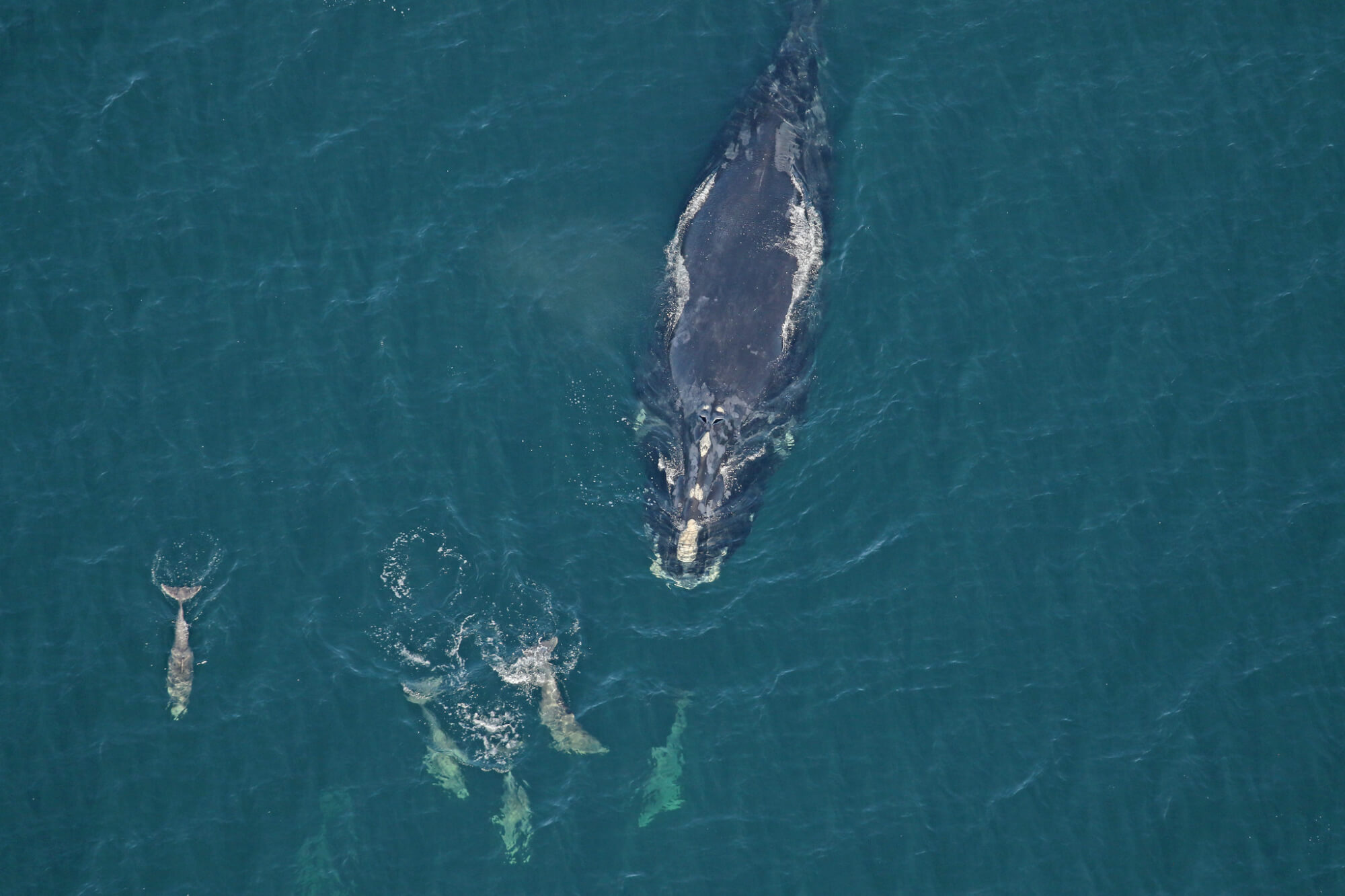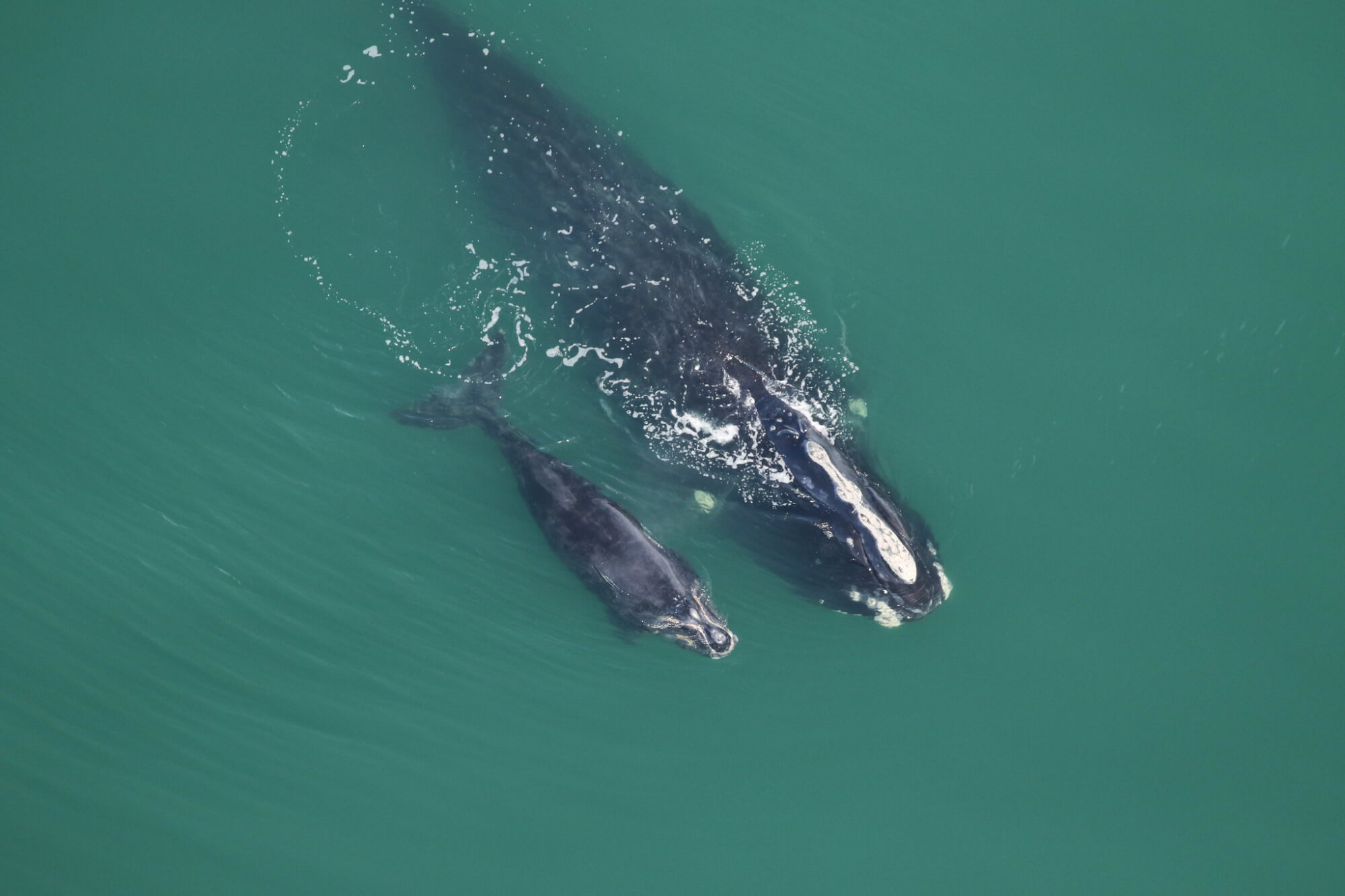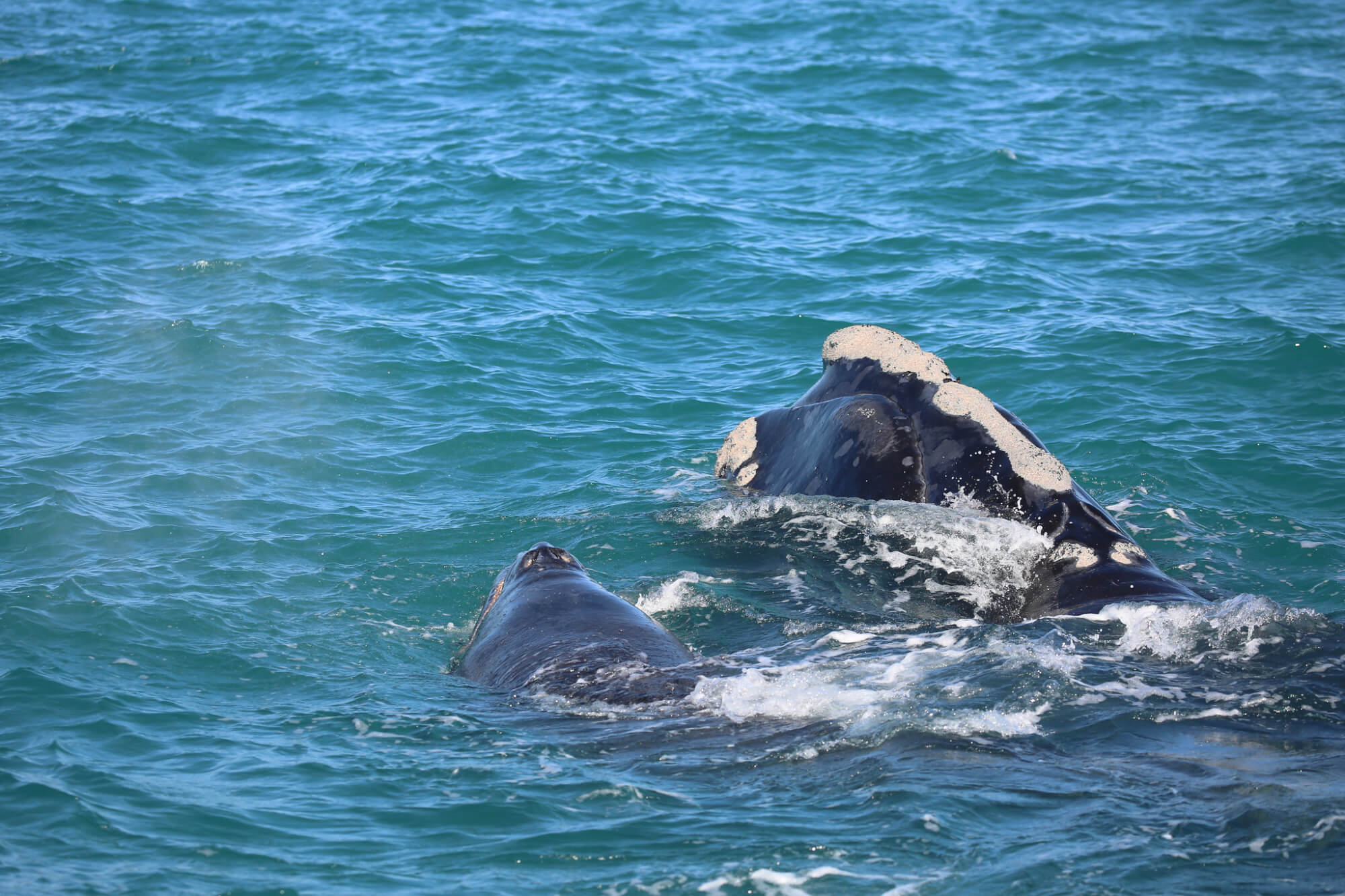The Government of Canada has just announced what measures will be taken this year to protect North Atlantic right whales that spend their summer in Canadian waters. These include extended surveillance, zone-specific speed limits, increasingly fine-tuned management of fishing zone closures, and joint actions.
Continuity and improvements
With a population of fewer than 360 individuals, the North Atlantic right whale is critically endangered. Since 2017, when an exceptional series of mortalities put the species in the spotlight, Canadian authorities have been busy trying to limit fishing gear entanglements and ship strikes, the two main causes of death for this species.
Most of the measures put in place in 2020, whether by Transport Canada or Fisheries and Oceans Canada, have been renewed. “In 2020, no North Atlantic right whale deaths or new entanglements were reported in Canadian waters, which is why we are banking on these actions to ensure that this trend continues” declared Minister of Fisheries, Oceans and the Canadian Coast Guard Bernadette Jordan in a statement.
Compared to last year, the changes made are mainly aimed at improving cohabitation between right whales and fishermen by optimizing closure periods and zones in accordance with the presence of whales and by relaxing regulations in shallow areas.
Slowing down to limit collisions
Once again this year, traffic management measures for vessels over 13 feet will be in effect in the Gulf from April 28 to November 15. The St. Lawrence is once again being carved into static, recommended, dynamic or even seasonal speed limit zones. New this year: no speed limits will apply to waters less than 20 fathoms (approx. 36 m deep), as right whales are less frequent such shallow areas.
Another modification for 2021 is that the location and size of the Shediac Valley traffic restriction zone will be refined based on observation data. In this area, which attracts right whales in considerable numbers, only certain vessels will be able to transit, and at a maximum speed of 8 knots.
Similar to last year, vessels in violation of these limits face fines of up to $250,000. Transport Canada points out that in 2020, four penalties were issued to ships for non-compliance.
Helping fishermen and whales live together
Once again this year, fishermen will have to deal with temporary closures: whenever a right whale is detected (acoustically or visually), an area spanning approximately 2000 kmwill be closed to non-tended fixed gear fisheries (e.g. lobster or crab fishing) for 15 days.
Last year, a second right whale report systematically led to the closure of the area for the entire season, while this year, a second detection will have to take place between Days 9 and 15 after the first observation to trigger a complete closure in the Gulf of St. Lawrence.
Additionally, shallow areas (less than 20 fathoms) will only be subject to temporary closures in the event that a right whale is detected in these waters.
With these adjustments, Fisheries and Oceans Canada is seeking to achieve increasingly fine-grained management that would have the least possible impact for fishermen while maintaining a high degree of protection for whales.
The ministry is also showing flexibility with regard to new fishing rope regulations. While fishermen were initially required to begin using weak rope or breaking points by the end of 2021, this requirement has now been postponed to the end of 2022. According to Canadian authorities, “Due to the COVID-19 pandemic, many harvesters were unable to conduct on-the-water tests for safe and effective ways to implement this requirement.”
Latest news: a technical working group made up of fishermen, right whale experts and ministry officials will meet regularly throughout the year to tweak the current system and identify joint solutions.
Focus on monitoring and research
If it’s not broken, don’t fix it.” This old adage can be applied to monitoring, where aerial surveillance combined with drones and acoustic detection systems represents a rather effective solution for tracking the presence of North Atlantic right whales in the Gulf of St. Lawrence.
This year, there are plans to add a new underwater acoustic glider to to expand monitoring efforts in the Cabot Strait. Aerial surveys are also expected to place added focus on areas that have not been heavily covered to date. Indeed, right whales are not always where we expect them to be!
Scientific and technological research is also getting its share of attention. The Canadian government has announced substantial financial support fora number of research projects that focus on real-time detection of whales or on modelling whale presence and movement.







